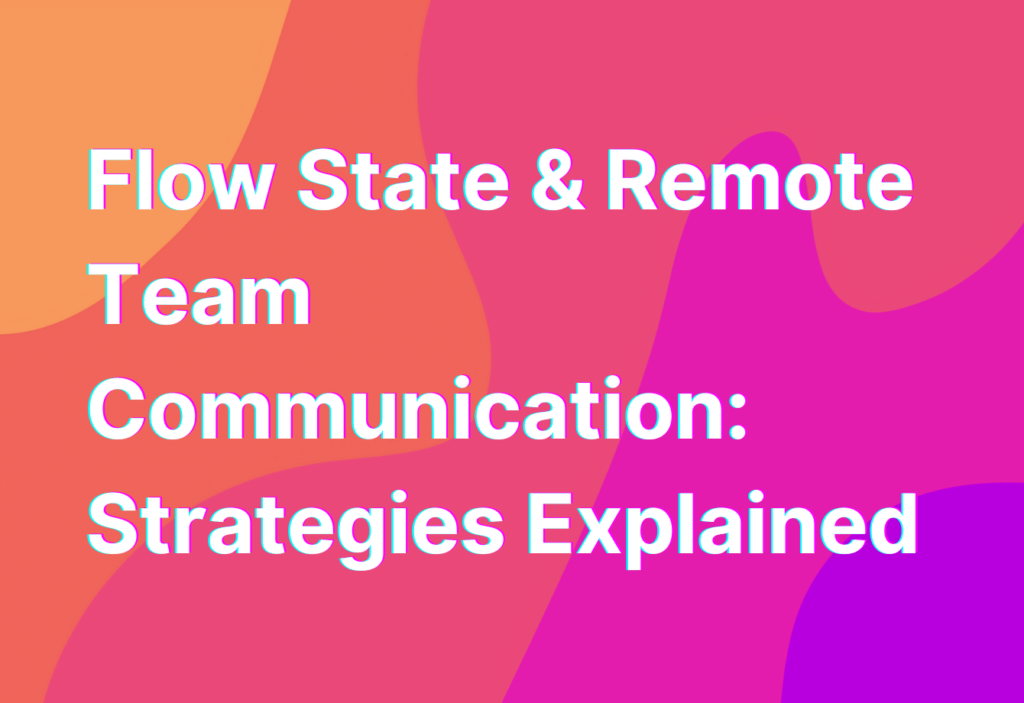Flow State & Remote Team Communication: Strategies Explained
Hey there, remote work enthusiasts! It’s Ashley here, your go-to gal for all things remote work. Today, I want to dive into the fascinating concept of flow state and how it relates to remote team communication. So grab your favorite cup of coffee (or tea, if that’s your thing) and let’s get started!
What is Flow State?
Flow state, also known as being “in the zone,” is that magical state of mind where you are fully immersed and focused on a task. It’s that feeling of complete concentration and effortless productivity. You know, when time seems to fly by and you’re just crushing it. Ah, don’t you just love those moments?
Flow state was first coined by psychologist Mihaly Csikszentmihalyi (try saying that three times fast) in the 1970s. According to Csikszentmihalyi, flow state is characterized by a perfect balance between challenge and skill. When the challenge of a task matches your skill level, you enter this state of flow.
Now, you might be wondering, “Ashley, what does flow state have to do with remote team communication?” Well, my friend, the answer lies in the ability to create an environment that fosters flow state within your remote team. And that’s exactly what we’re going to explore next.
Strategies for Remote Team Communication in Flow State
1. Clear Communication Channels
Effective communication is the backbone of any successful remote team. To create an environment conducive to flow state, it’s crucial to establish clear communication channels. Whether it’s through email, instant messaging platforms like Slack, or project management tools like Trello (check out their website here), make sure everyone knows where to go for important updates and discussions.
2. Set Clear Goals and Expectations
Flow state thrives on clarity. As a remote team leader, it’s your responsibility to set clear goals and expectations for your team members. When everyone knows what they’re working towards and what’s expected of them, it becomes easier to enter that state of flow. Plus, it helps prevent any misunderstandings or miscommunications along the way.
3. Foster Collaboration and Feedback
Collaboration and feedback are essential ingredients for flow state. Encourage your remote team members to collaborate, share ideas, and provide constructive feedback. This not only enhances the quality of work but also creates a sense of camaraderie and support within the team. Remember, teamwork makes the flow work!
4. Embrace Flexibility
One of the greatest advantages of remote work is the flexibility it offers. Embrace this flexibility and allow your team members to work in a way that suits them best. Some might prefer early mornings, while others are night owls. By accommodating different working styles, you’re giving your team the freedom to enter their flow state at their own pace.
5. Use Technology to Your Advantage
Technology is a remote worker’s best friend. Utilize tools and software that streamline communication and collaboration. From video conferencing platforms like Zoom to project management tools like Asana, there’s a plethora of options out there to help your team stay connected and in the flow. Just remember to choose tools that align with your team’s needs and preferences.
Wrapping Up
And there you have it, folks! We’ve explored the concept of flow state and how it relates to remote team communication. By implementing strategies like clear communication channels, setting clear goals, fostering collaboration, embracing flexibility, and utilizing technology, you can create an environment that promotes flow state within your remote team.
If you’re interested in learning more about effective group decision-making in remote teams, check out this informative article on our website: Group decision-making. It’s a must-read for any remote team leader looking to enhance their team’s decision-making process.
Until next time, stay in the flow and keep remote working like a boss!


